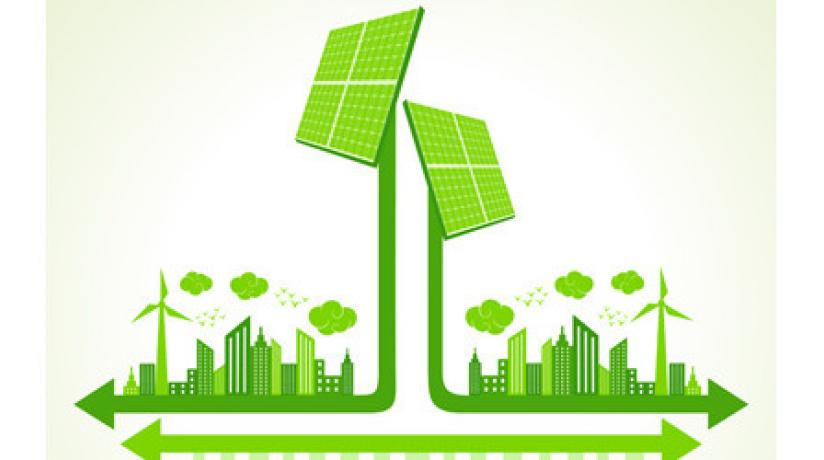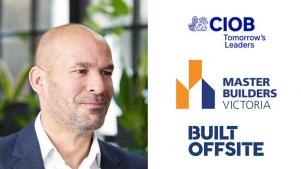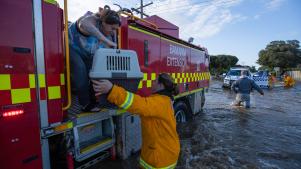The quality and range of Victoria’s new sustainable commercial buildings has grown exponentially since the Best Sustainable Project category was launched in 2008 at the Master Builders Excellence in Construction Awards (EICA).
Master Builders Sustainable Building Adviser, Dr Phil Alviano, said the field had become more competitive as builders embraced the sustainable building revolution.
“Builders want to try new and innovative ways of building and sustainable construction offers a range of possibilities,” Dr Phil said.
This year’s EICA will see the below builders in the running for the coveted Best Sustainable Project award. Among the nominated projects are:
• Cabrini Linen,Dandenong South by Vaughan Constructions;
• Royal Wolf, Sunshine by Ducon Construction;
• Melton Library and Learning Hub, Melton by Adco Constructions (Vic) Pty Ltd; and,
• Yarra Valley Water Mitcham head office, Mitcham by Built.
As chief judge of the category, Dr Phil explains what he looks for when choosing the winner and how much the sustainable building industry has changed over the past 10 years.
“I don’t just look at how it was built sustainably but also how it can be used sustainably, for the life of the building,” Dr Alviano said.
“This year’s nominees all have their own interesting story to tell.”
When constructing the Royal Wolf facility in Sunshine, Ducon employed a number of sustainable building innovations, notably the use of recycled materials.
Ducon managed to retrofit old shipping containers as office suites without skimping on comfort and aesthetic.
“The Royal Wolf complex is a great example of material reuse and waste reduction,” Dr Alviano said.
“Ducon used cork flooring, locally grown Silver Top Ash decking and double glazed windows to create a comfortable working environment for Royal Wolf staff.
“There is a really interesting use of space with this project and the end result is very functional.”
The biggest challenge for Built when undertaking the Yarra Valley Water office refit in Mitcham was having to work around staff who were still using the building. By doing construction in stages, they were able to not only get around this challenge but complete a modern, sustainably built office space that will be an asset to the water authority.
“This is an example of the re-use and recycling of an existing building that increased its energy and water efficiency and provided a much better environment for the people working in it. This has the added benefit of increasing employee productivity”. Dr Alviano said.
“Tri generation is used to generate electricity on site from gas providing major efficiency benefits.
“Waste heat is also used to heat the building, hot water and provide energy for air conditioning. The construction process was also entirely carbon neutral.”
When constructing Cabrini linen in Dandenong South, reducing potable water use was a large part of goals. The project also had a positive benefit for the local community.
“Water use is a key part of the ongoing sustainability of this building and so Vaughan tapped into the South East Water Purification Plant and in doing so, have made the provision of a recycled water pipeline to neighbouring housing estates economically viable,” said Dr Alviano.
“This project also has the capacity to collect stormwater from the roof.”
The Melton Library and Learning Hub exceeded the minimum 4 Star rating required of commercial buildings, achieving a 5 Star (as built) rating. This community focused facility is a great example of sustainable construction done well.
“Adco concentrated on the air tightness of this facility to reduce the amount of heating and cooling required to keep the users comfortable,” Dr Alviano stated.
With 14Kw of solar panels on the roof and a combination of timber and concrete construction, the learning hub pushed the boundaries in construction techniques and materials.
“Timber is good to use in construction because it has low embodied energy and provides carbon capture and storage,” Dr Alviano said.
“ A form of geo polymer based concrete named e-Crete was used, this uses less energy to manufacture but is quite complicated to work with during the construction process – it’s a credit to Adco that they had the foresight to use this sustainable building material.”
Over the past six years of judging the category, Dr Alviano said he looks for how builders have reduced water and energy use, the sorts of materials they use and how they have reduced the environmental impact overall.
“It’s all about being innovative throughout the construction process,” he said.
“This category builds innovation in the industry and provides a platform for these builders to showcase how they’ve had a go at doing something a bit differently.
“Sustainable building has come so far over the past decade. There was a time when it was difficult to find an example of a local building with a Green Star rating, now it is commonplace.
“Furthermore, some of the best sustainable buildings in the world are right here in Australia, that is something to be proud of.”
Date: Friday, 8 August.
Time: 6.15 for 7pm start.
Venue: Crown Palladium, Southbank.
Cost: $200 per seat (Three course dinner, drinks and entertainment included).
Call (03) 9411 4555 to book you tickets now.
Follow all of the Master Builders Awards news on Twitter and Facebook with #mbavawards.






